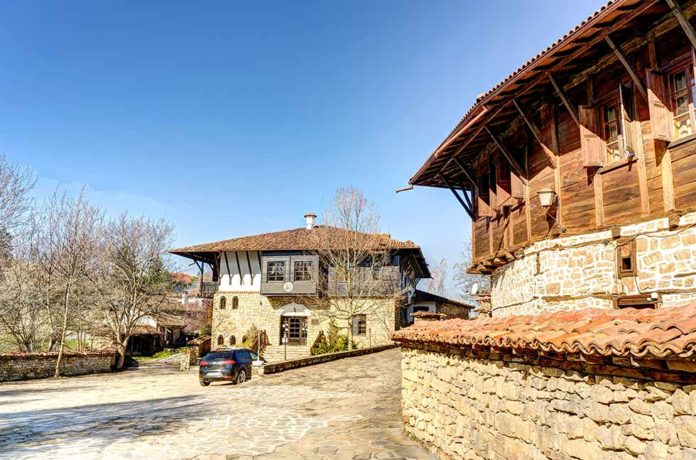A Brief History
Sitting serenely in the heart of Bulgaria, near Veliko Tarnovo, Arbanassi whispers tales of a time long past. Its origin traces back to the late 15th century when Albanian Christians established it, hence its name, “Arbanassi”. Initially, it was a modest village, but by the 17th and 18th centuries, the locale thrived as a center for trade and craftsmanship.
Arbanassi’s golden era saw the birth of grand houses and churches styled with an amalgamation of Balkan and Ottoman influences. Their striking architecture bears testament to the immense wealth the village once possessed. However, the constant political upheavals in the Balkans led to its gradual decline in the 19th century.
Arbanassi’s Architectural Marvels
Today, Arbanassi’s character lies in the silent endurance of its iconic structures. Encased within thick stone walls, the houses appear more like miniature fortresses from the outside. They were designed this way for protection, a testament to the tumultuous times. Yet, their interiors paint a different picture, boasting lush courtyards and intricately painted murals.
One cannot overlook the Konstantsalieva House. Constructed in the 17th century, it remains an authentic example of the affluence that Arbanassi once held. Today’s house-turned-museum guides visitors through its labyrinthine layout, featuring more than ten rooms, a wine cellar, and a charming summer kitchen.
The Sacred Roots
Arbanassi is equally renowned for its spiritual heritage. The village has five churches and two monasteries, each echoing Byzantine influences and local artistry. The Church of the Nativity stands out, with its stunning frescoes narrating biblical stories from floor to ceiling. Dating back to the late 16th century, this church offers an intimate experience of Eastern Orthodox Christianity.
The monasteries St. Nicholas and St. George are noteworthy, too, holding considerable significance for Bulgarian Orthodox believers. These sacred spaces continue to serve as spiritual retreats and places of pilgrimage, imbuing the village with a sense of tranquillity.
Arbanassi Today
Time has not dimmed Arbanassi’s allure. 1921 the village was declared a national architectural reserve, helping preserve its historical charm. It is now one of Bulgaria’s most sought-after destinations, intriguing travelers with its rich tapestry of history, spirituality, and culture.
Tourists can explore the numerous museums dot the village, housing precious artifacts and unraveling stories of a bygone era. But the lure of Arbanassi extends beyond its historical roots. Visitors are drawn to its panoramic vistas of Veliko Tarnovo, once the capital of the Second Bulgarian Empire. A simple hike up to the village’s highest point unveils this enchanting view, creating a memory to be cherished.
Arbanassi, a humble village in Bulgaria, is a testament to the country’s vibrant history. Its story is told through centuries-old houses, painted churches, and quaint cobblestone streets. Though its days of grandeur have passed, Arbanassi continues to captivate, offering a captivating journey back in time. Its enduring charm is a beacon that beckons history buffs, architecture enthusiasts, and spiritual seekers alike, making Arbanassi a must-visit on any Bulgarian itinerary. Arbanassi can be seen on the “Discovery” Road Trip.



